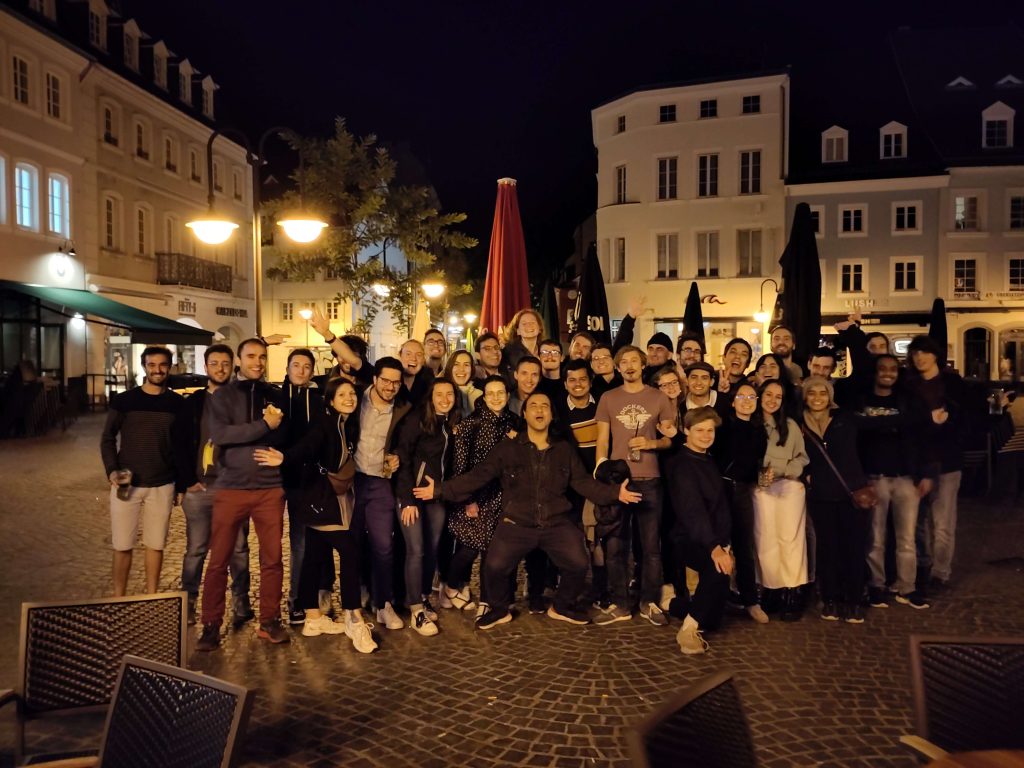What happens when you take around a hundred students working in the field of magnetism and put them in the same place? You end up with a mix of intriguing ideas, intense discussions, heated sports sessions, and lots of fun. This is how I would describe the two weeks in the mid of September spent in the European School of Magnetism (ESM) in Saarbrucken. It was a nice opportunity to meet new people, form new connections and get together with fellow ESRs (Eoin (ESR1), Marco (ESR3), Salvatore (ESR7), Paolo (ESR8), Sergio (ESR9), Vishesh (ESR11) and Zhewen (ESR13)).

Leading professors and researchers from various fields of magnetism gave lectures on topics ranging from fundamentals of magnetism to applications. I was fascinated by how some properties that we generally take for granted have such complex origins. It was also interesting to learn about the wide variety of magnetic materials (ferromagnetic, antiferromagnetic, ferrimagnetic, multiferroics, magnetocaloric, magnetoelectric, etc) and their wide range of applications. Some lectures were organized to give the participants an industrial perspective on the field of magnetism which were really helpful for people willing to go to the industry or start their own venture. Some volunteers from the participants were also given the opportunity to chair lecture sessions. I also had the opportunity to chair a session by Johannes Paulides on Electric motors and generators.

We also had the opportunity to experience a day of practical experiments in the labs of Technische Universitat of Kaiserslautern and Institut Jean Lamour in Nancy. We were divided into groups and sent to one of the two institutions. My group got the opportunity some broadband ferromagnetic resonance (BB-FMR) measurements at TU Kaiserslautern. It was interesting to carry out experiments outside the scope of my project.
Since the theme for this year was “Basic magnetism for sustainable development”, a crucial element of the school was student projects to solve sustainability issues using magnetism. Along with Marco (ESR3) and other participants, our group tackled the issue of energy efficiency in computation using neuromorphic computing. We presented a range of magnetoelectric, spintronic, and magnonic devices and architectures that can potentially solve this issue. Overall, it was an amazing experience interacting with people from different backgrounds and working on different projects. Surely, the seeds of many potential collaborations and partnerships were sown over the food table, coffee breaks, poster sessions, and late-night discussions, which will reap rewards in the future. In my opinion, if you are working in the field of magnetism, you should attend a session of ESM during your Ph.D.


